Santa Cruz
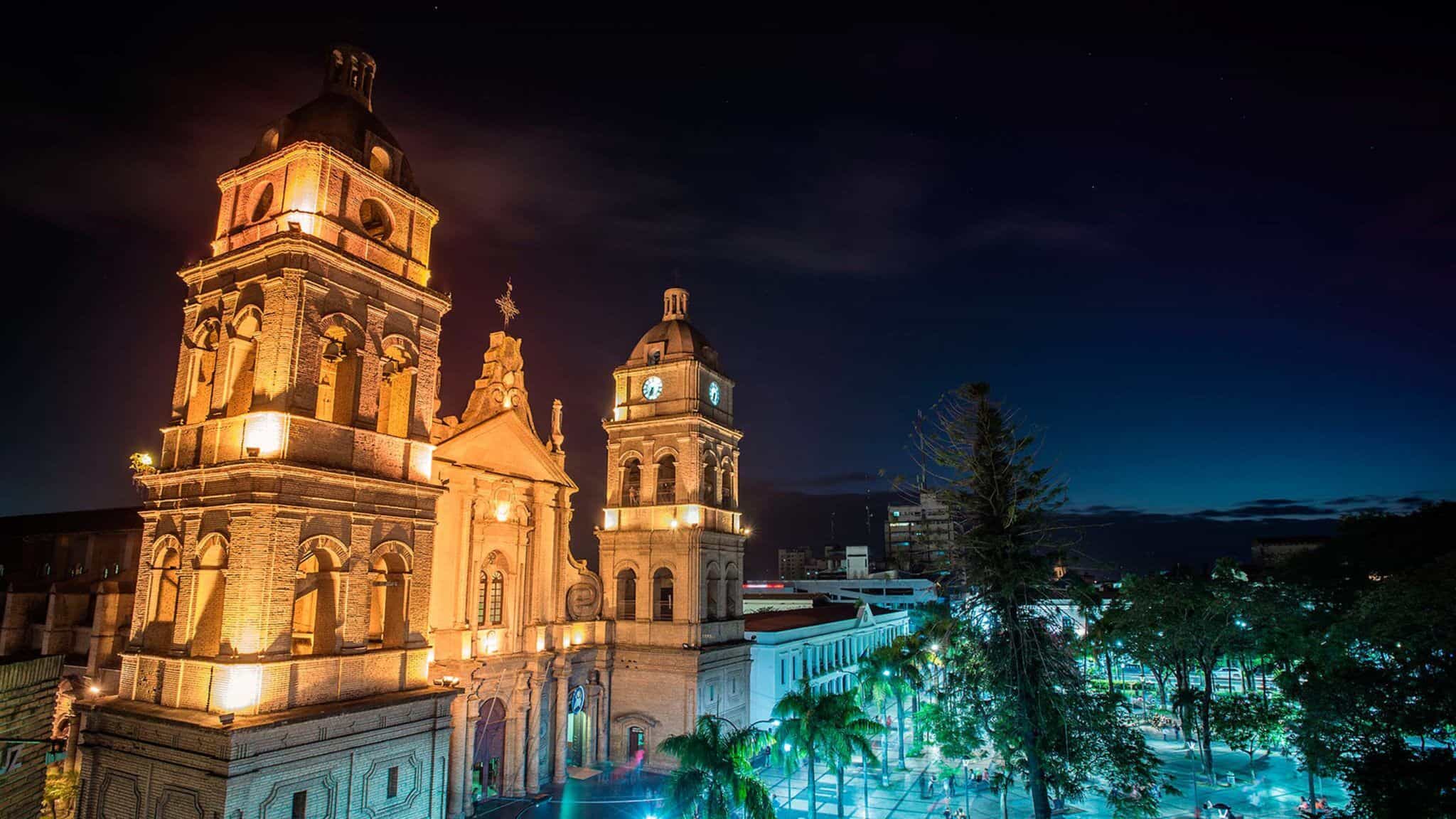
The "department" Santa Cruz is the easternmost “department” (departamento) of Bolivia and alone occupies 33% of the entire state. If you go to Bolivia by plane, it is certain that you will land in its capital Santa Cruz de la Sierra and, therefore, this particular region will be your starting point for your Bolivian adventure.
This department has some of the most beautiful parks in Bolivia. Although this "departamento" is indeed large, with a single day's trip by bus you can explore one of the three national parks of Santa Cruz and be amazed by the enormous biodiversity present in Bolivian nature.
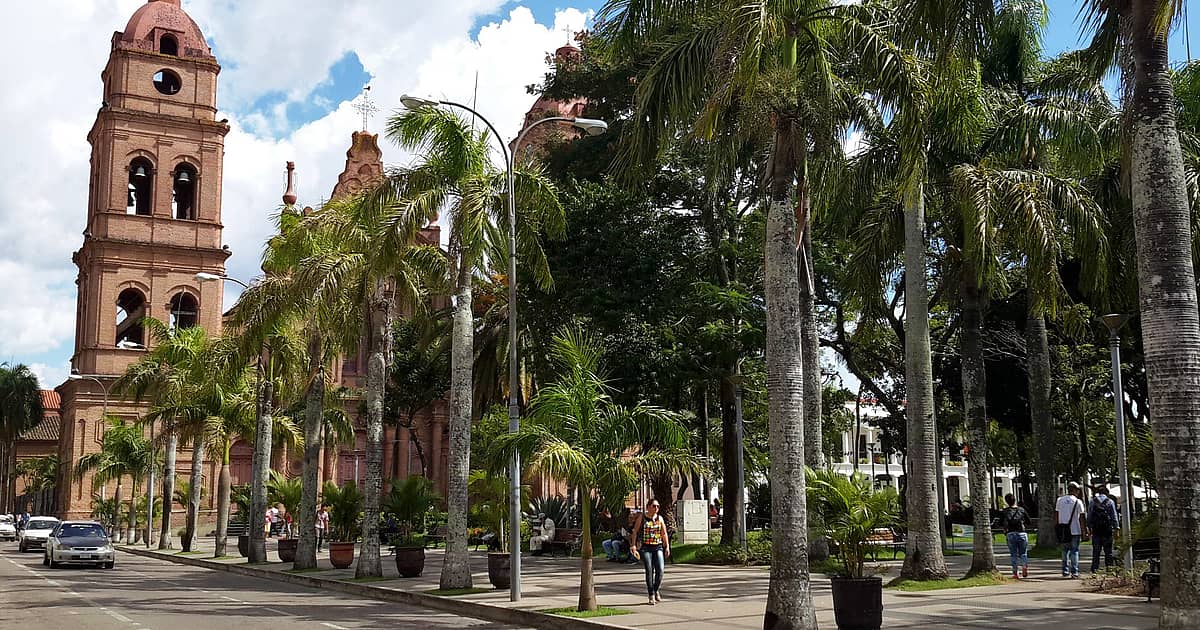
The common" Santa Cruz de la Sierra (also called simply Santa Cruz) is a municipality (municipality in Spanish) of Bolivia in the Andres Ibanez Province (department of Santa Cruz). It has a density of 370,000 km² with 2,114,248 inhabitants (2012 data). Since the mid-1990s it has been the most populous city in Bolivia.
The name literally translated into Italian means Santa Croce della Montagna. It is a city with a warm climate located on the vast eastern plains, on the banks of the Piraí River, home to the best international airport in the country, Viru Viru, and is located at a height of 416 meters above sea level.

Its rapid economic development has transformed it into a strategic axis for Bolivia, however the colonial character of "Casco Viejo" and the conviviality of its inhabitants has remained the personality of the oriental city. From an urban point of view, the city is divided into concentric sectors called rings.
Although it has only about two million inhabitants, it is particularly extensive due to the almost absence of multi-storey buildings (appearing only in recent years). From north to south it measures more than 17 km and from east to west about 15. The city is also the new economic center of Bolivia.

Despite still having significant infrastructure shortcomings, it enjoys large sectors with modern utilities, telecommunication, hotels and banks. Most of the main foreign companies present in Bolivia, after all, have their national headquarters in Santa Cruz.
The active commercial life of the city, especially in the areas of hydrocarbons, agribusiness and construction, favors this city to have the best hotel infrastructure in the country. Expocruz is held here every year in September, one of the largest industry and trade fairs in South America.
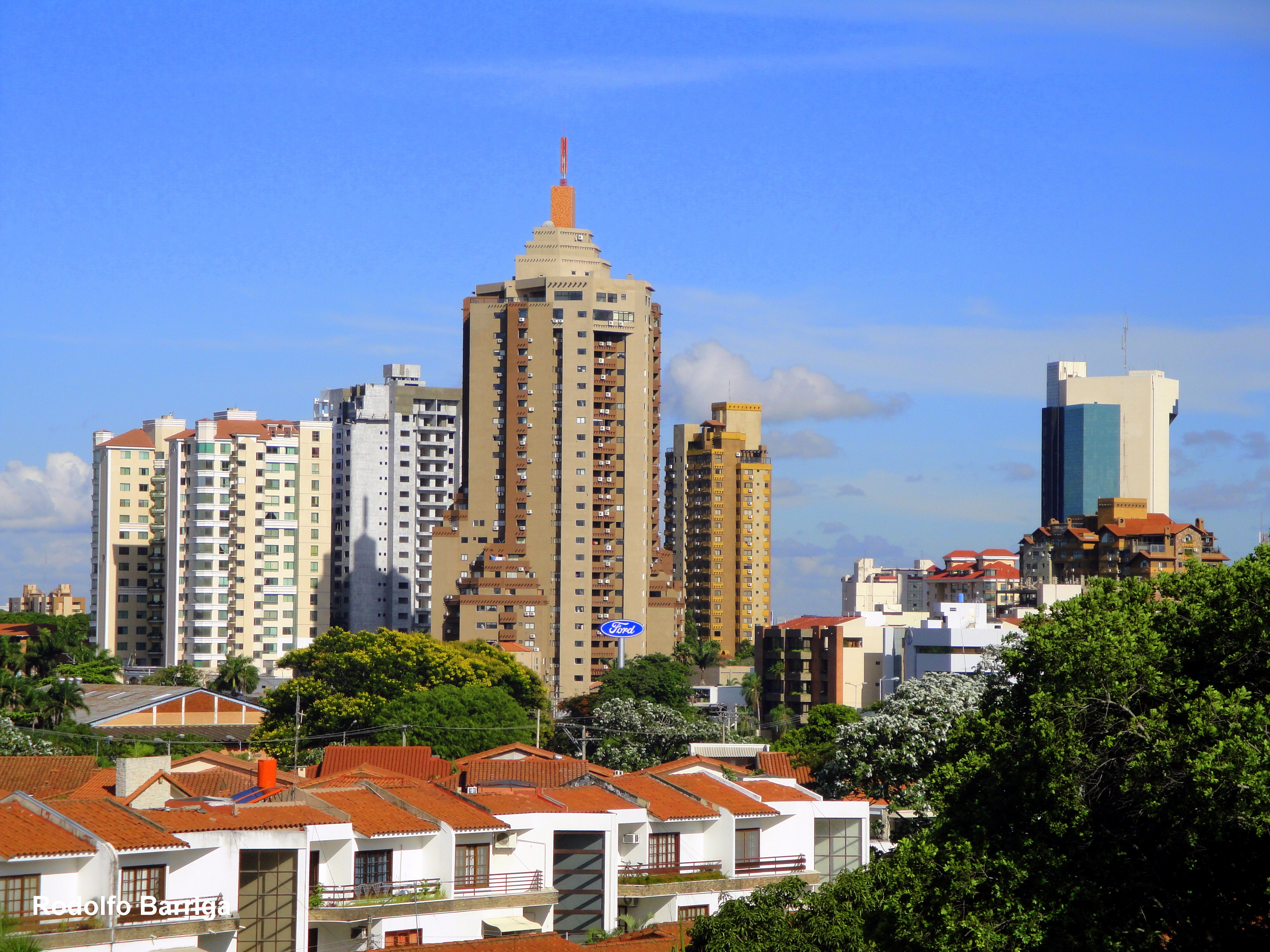
The most important cultural event that Santa Cruz hosts is the International Festival of American Renaissance and Baroque Music "Misiones de Chiquitos", which is held every two years in its international version.
Today, Santa Cruz de la Sierra is also the most cosmopolitan and active city in the country, as well as the largest, most populous and richest. In Santa Cruz de la Sierra you can always party: there are typical restaurants where you can eat churrascos, trendy clubs where you can drink chuflays and lots of nightlife.
There are also recurring holidays such as "El Carnaval" in February-March; Fiesta de la Cruz in May and the “Día de la Tradición” in September.
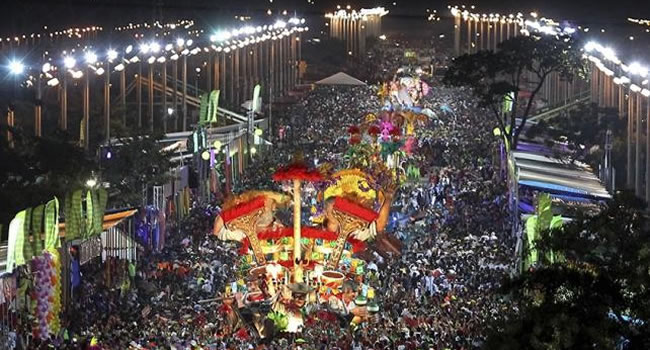
Bolivian dishes are delicious, but there is a product that is very popular in Santa Cruz de la Sierra and we rightly add: we are talking about the "Achachairú", the particular and tasty tropical fruits that are used - literally - everywhere in the East! Wandering around Santa Cruz you will find achachairú juices, achachairú jams, achachairú ice cream and even a sauce to add to main courses.
So don't miss the opportunity to taste traditional dishes such as majao and rice-based locro, while pipian, masaco or churrasco will amaze and fascinate you with the flavors and aromas of these lands.

History The city was founded on February 26, 1561 by Captain Ñuflo de Chaves, who named it Santa Cruz de la Sierra after his hometown in Spain. The original settlement of the city was about 220 km east of its current location, a few kilometers south of today's San José de Chiquitos. In 1592, after several clashes and fights with the natives, the city was moved to its current location on the banks of the Piraí River.
Some remains of the initial settlement can be seen in the locality of Santa Cruz la Vieja (Old Santa Cruz) near San José de Chiquitos, which itself was founded in 1692 as a Jesuit mission.
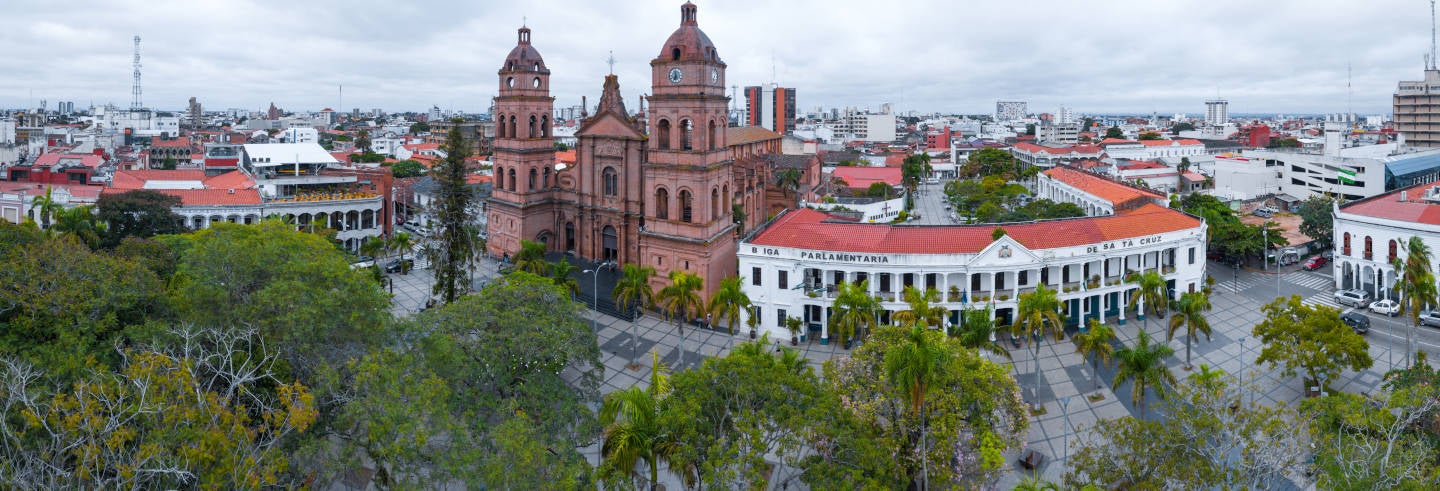
Santa Cruz, today, is also connected by rail with Argentina and Brazil and with the Andean areas and the cities of Cochabamba and La Paz by roads built and paved only since the fifties. Isolated for centuries from the Andes and considered subordinate to the Andean cities, Santa Cruz has only begun a process of autonomy since the early 2000s, driven by economic growth.
The first step, at the end of 2005, was the direct democratic election of the prefect, the highest departmental political authority in Bolivia, previously appointed directly by the President of the Republic.
The rivalry with the Bolivian Andean centers was often also an ethnic and cultural reflection, as well as an economic one: the camba, the mestizo populations originating in eastern Bolivia, have divided almost nothing over the centuries with the collas, the original populations of the Andes, nor the language, nor the territory, nor the uses, nor the customs.

Currently Santa Cruz de la Sierra is the center of protest by various Bolivian departments to consolidate regional autonomies. Republican Bolivia, "andinocentric", is now trying to rebalance the human, economic, cultural, ethnic and social geography, with the inclusion of the regions of the east, two thirds of the country, which has grown rapidly since the 1950s. On May 4, 2008, the governor of Santa Cruz, Ruben Costa, proclaimed a popular referendum to have administrative independence from Bolivia.
The result was 82% of votes in favour. President Evo Morales, however, neither declared it unconstitutional, considering it illegitimate, but declared himself willing to open a dialogue. Morales also called it a failure by virtue of the fact that abstentions exceeded 30%.
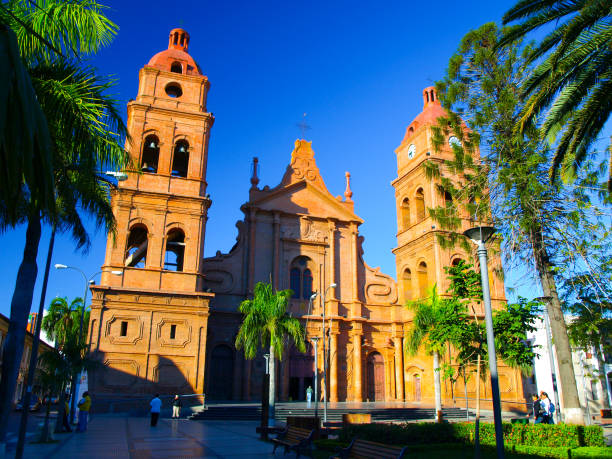
The Cathedral of Santa Cruz, also known as the Basilica of San Lorenzo, is the most important church in the city and is located in the Plaza de 24 Septiembre. It was built in 1845 on the remains of the previous church and the project was by the French architect Felipe Bertrés. About a century later it was renovated in neoclassical style on the project of the Italian architect Victor Querezolo and was finished in 1915.
Distinctive features of this cathedral are the wooden vaults and the pictorial decorations along all the walls. In addition, part of the original facing dating back to the managed mission of San Pedro de Moxos is preserved on the High Altar.
• How to get there: in Plaza 24 de Septiembre -
• Hours: Tuesday, Thursday, Saturday and Sunday from 10:00 to 12:00 and from 16:00 to 18:00
• Ticket cost: approximately 3 Bs (about €0.38)
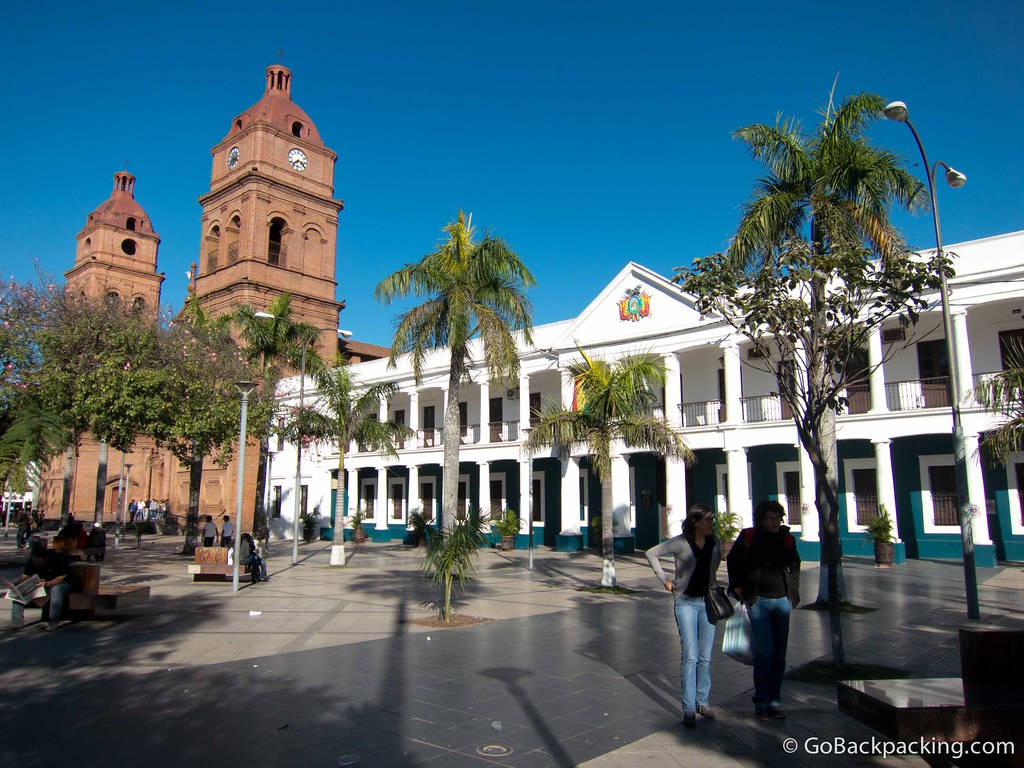
Plaza de 24 Septiembre, also known simply as Plaza Central, is the center and heart of Santa Cruz de la Sierra. This is where the city was born and has developed over the years, up to the present day and some of the most important historic buildings overlook it.
The square is a real well-kept green area where there are many benches protected by the shade of palm trees and other tropical trees, perfect for relaxing and admiring the comings and goings of the city.
Inevitable food vendors with their carts. Furthermore, here you can participate as a spectator in one of the many chess matches between the inhabitants of the city. Finally, the square is the reference point for your movements and the point from which to explore the city.
• How to get there: Main square of the city, located in the historic center, between Junin, Libertad and 24 de Septiembre streets -
• Hours: always accessible
• Ticket cost: free totally at the end of the 19th century.

Not far away is the Museo Catedralicio de Arte Sacro, which houses precious artifacts in gold and silver from the Jesuit missions and which, as evidence of the great wealth of the colonial period, also preserves sacred vestments and other ancient liturgical elements.
On the square there are also the Casa Municipal de la Cultura Raúl Otero Reiche, where you can admire the works of local contemporary artists, and the Museo de la Independencia, a small museum where you can learn more about the history of Bolivia and Santa Cruz .
Not far away is also Casa Melchor Pinto, a welcoming cultural center where there is also a beautiful library and a refreshment point.

On the next block, you will find the Museo de la Ciudad “Altillo Beni” and, continuing a little further north-east, the Iglesia San Francisco. T
The city of Santa Cruz is full of museums that tell important parts of Bolivian history, among which the Museo Historico Militar Heroes Del Chaco stands out, dedicated to the military and the war events that affected the country, and the Museo de Arte Contemporáneo.

Our itinerary continues in a northerly direction and leads us to Parque El Arenal. It is a very famous park located in the city center, not far from the Plaza de 24 Septiembre. It is a meeting point for all the inhabitants of Santa Cruz and also for tourists.
The park was born around the lake, still present, which decades ago, before the development of the city, was a small natural lake on the outskirts, where children went to play and swim and women washed their clothes. What you can see today is the result of the renovation and redevelopment of the area a few years ago.
Today's park was inaugurated in 2010 and today is one of the top tourist attractions in Santa Cruz. Cultural events are organized here.
• How to get there: between via Beni and via Murillo, just 800 meters from the Plaza de 24 Septiembre, about 10 minutes on foot-
• Hours: every day from 7:00 to 21:00
• Ticket cost: free

Every South American city has its market, the place where you can come into close contact with the inhabitants of the city and their culture, customs and traditions. In Santa Cruz you will find the Paseo Artesanal La Recova, a market full of handicraft products, the best place to buy something typical to take home as a souvenir of your wonderful trip. But not only objects, you will also find many stalls where you can taste traditional cuisine.
Finally, in the market there is a stage where shows and live music are held.
• How to get there: located on Calle Florida, just 200 meters from Plaza 24 de Spetiembre, about 3 minutes on foot -
• Hours: every day from 9:00 to 19:30
• Ticket cost: free

The Jardin Botanico Municipal is a place completely immersed in nature that extends for about 186 hectares. It is located on the outskirts of Santa Cruz, about ten kilometers from the city center and was created at the end of the 20th century. Between paths and small lakes, here you can walk and relax while discovering the different species of Bolivia.
The objective of this garden is precisely to protect and design the great variety of plants typical of the Bolivian tropical climate. Among the various areas, you can see a cactus garden, an avenue of palms only and a greenhouse with only orchids.
Finally, the botanical garden is also a meeting place for the locals, thanks to its auditorium that seats up to 80 people used for events and conferences, a playground, a football pitch and a picnic area equipped with barbecues.
Beware of mosquitoes: bring repellent and wear covering clothes, otherwise you will be forced to leave the garden early due to their pecking.
• How to get there: it is located on Carretera a Cotoca, about 10 kilometers from Santa Cruz; from Paradas de Micro, the bus station in the city center, several microbuses leave which will take you to the Jardin Botanico in about 20 minutes for the price of 3 bs per person (about €0.38) -
• Hours: every day from 9:00 to 17:00
• Ticket cost: approximately 10 Bs (about €1.30)

Going past Avenida Cañoto and Avenida Uruguay, the streets that form the first ring, you reach the second area of the city. Here, opposite the Plaza del Estudiante, is the Palacio de Justicia, while in the northern area of the city you will find the Zoológico Municipal Noel Kempff Mercado, the zoological garden which, within a large park, houses various animal species.
The Zoológico Municipal Noel Kempff Mercado is a zoo dedicated to university professor and natural scientist Noel Kempff, killed by drug traffickers. This zoo is the most important in Bolivia and in all of South America, thanks to the vast biodiversity of animal species it houses and was created by Kempff with the aim of preserving and protecting the fauna and flora of Latin America.
Today there are around 1,800 animals of 232 different species in the facility.
• How to get there: it is located in Av. Marcelo Terceros Bánzer, in the San Carlo district; about 3 kilometers from the Plaza de 24 Septiembre, 40 minutes on foot; reachable with a Micro at the cost of 3 bs per person (about €0.38) or by taxi, with a journey time of about 10 minutes -
• Hours: from Tuesday to Sunday at 9:00 to 17:30
• Ticket cost: approximately 1 Bs (about €0.13)

In the southern district of the center, along Avenida Irala, is the Museo de Historia Natural Noel Kempff Mercado, dedicated – like the zoo – to the memory of the university professor and natural sciences scholar killed by drug traffickers.
The museum houses a permanent exhibition that tells the characteristics of the flora and fauna of Bolivia and not far from it, at the intersection of Avenida Ilra and Avenida Las Americas, is the Monument to Simón Bolivar.
The museum's mission is in fact to contribute to the knowledge, conservation and sustainable management of Bolivia's biodiversity.
The aim is to become a reference institution both nationally and internationally in this field, trying to succeed in having a weight also in regional and national policies, to protect this biodiversity in the best possible way.
• How to get there: located on Avenida Irala, about 1 kilometer from the Plaza de 24 Septiembre, 14 minutes on foot -
• Hours: Monday to Friday from 8:00 to 12:00 and from 15:00 to 18:30; closed on Saturday and Sunday
• Ticket cost: approximately 1 Bs (about €0.13)
.jpg)
Video: Santa Cruz
Map: Santa Cruz
Address: Calle Sucre undefined Santa Cruz de la Sierra Bolivia
Santa Cruz de la Sierra Santa Cruz
Latitude: -17.78399717354846
Longitude: -63.180999755859375
Site: ...
vCard created by: Marco Cadelli
Currently owned by: Marco Cadelli
Type: City
Function: Public place
Creation date: 17-12-2022 14:06
Last update: 19/12/2022